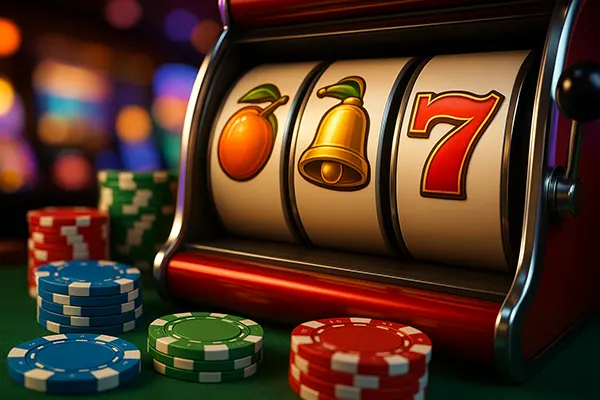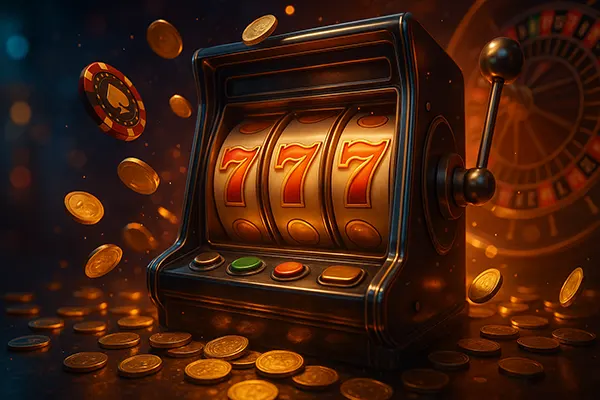Volatility Mechanics: Understanding Risk and Play Style in Slot Games

In the evolving world of online slot gaming, volatility has become one of the most important factors determining how players experience a game. It reflects not just how frequently wins occur but also how significant those wins might be. Understanding the mechanics of volatility helps players make informed decisions about which slots best suit their preferences, budget, and gaming strategy.
What Slot Volatility Really Means
Volatility, often referred to as variance, measures the risk level of a slot game. It determines how often and how large payouts tend to be. A low-volatility slot provides frequent but smaller wins, creating a steady rhythm of rewards that keep gameplay smooth and low-risk. High-volatility slots, on the other hand, deliver fewer but much larger payouts, appealing to players who enjoy high-risk, high-reward gameplay. Medium-volatility slots strike a balance between the two, offering moderate frequency and payout sizes.
Modern slot developers use mathematical models to calculate volatility. These models factor in the game’s Return to Player (RTP) percentage, reel distribution, and bonus features to estimate potential payout frequency and size. In 2025, with advanced RNG algorithms, developers can precisely design slots to cater to diverse playing styles and risk appetites.
Understanding volatility helps players align their expectations. Those seeking longer gaming sessions with consistent results often prefer low-volatility titles like *Starburst* by NetEnt, while thrill-seekers might gravitate towards high-volatility slots such as *Dead or Alive II* or *Sweet Bonanza*.
How Volatility Affects Gameplay Experience
The chosen volatility directly impacts the emotional and financial experience of playing slots. In low-volatility games, wins occur regularly, maintaining engagement without the need for large bankrolls. They are ideal for casual players who prioritise entertainment over massive payouts.
High-volatility slots require patience and a larger budget. While dry spells may last longer, the potential for a significant win makes these games attractive to experienced players. The anticipation of landing a massive payout can create a unique thrill, though it demands discipline and proper bankroll management.
Medium-volatility slots offer an equilibrium that suits a broad audience. Games like Book of Dead provide balanced excitement, featuring moderate risk with the possibility of substantial wins, ensuring both entertainment and a realistic chance for rewards.
How to Choose Slots Based on Volatility
When selecting a slot, understanding one’s playing style is key. Players who enjoy constant interaction and regular small wins should focus on low-volatility titles. These games help stretch a session without putting too much strain on the budget. They are particularly useful for meeting wagering requirements during bonus play.
For players looking to test their luck with the possibility of larger payouts, high-volatility slots are the go-to choice. They are designed to deliver fewer but more impactful wins, often tied to bonus rounds, multipliers, or progressive jackpots. Such games are often preferred by high-rollers or those who enjoy the suspense of riskier play.
Medium-volatility games remain the most versatile, making them ideal for players who want a blend of entertainment and reward potential. The combination of moderate risks and balanced returns makes these titles a mainstay across online casinos in 2025.
Identifying a Slot’s Volatility Level
Most modern slots clearly display their volatility level in the game’s information section, allowing players to make informed choices. However, for older or less-documented games, understanding the paytable can help. Slots offering higher maximum payouts, larger jackpot values, and infrequent but high multipliers are typically high-volatility games.
Players can also gauge volatility by observing gameplay patterns. Frequent low-value wins suggest low volatility, while longer gaps between significant wins often indicate high volatility. Tracking results over several sessions can help identify a slot’s risk level with more accuracy.
Several online review sources and data aggregators now analyse volatility metrics, providing transparency and assisting players in selecting games that align with their preferences and strategies.

Managing Risk and Maximising Enjoyment
Understanding volatility is not only about identifying risk but also about using it to one’s advantage. Managing bankroll according to a game’s volatility is essential for maintaining control and prolonging gameplay. Setting limits before starting ensures that losses remain manageable and enjoyment stays at the forefront.
Low-volatility games allow for smaller bets over longer periods, reducing financial pressure. In contrast, high-volatility games benefit from well-planned budgets and patience. It’s important to remember that large wins are rare, and a cautious approach ensures sustainability in the long run.
Smart players use volatility knowledge to align their expectations and optimise strategies. Combining awareness of volatility with RTP values and bonus frequency creates a holistic understanding of slot behaviour, allowing for better risk assessment and enjoyment.
The Role of Volatility in Modern Game Design
In 2025, volatility is not just a technical term—it’s a deliberate design choice by developers to shape player experience. Game studios now build slots around specific volatility models to cater to different audiences. This ensures that each title offers a tailored emotional and strategic journey.
Low-volatility games often emphasise visual appeal and continuous engagement through frequent small wins. High-volatility games, by contrast, use suspenseful mechanics, dramatic music, and large multipliers to enhance excitement. This diversity has helped make volatility one of the most critical factors in modern slot development.
As technology evolves, players can expect even more precise volatility indicators and adaptive systems that adjust gameplay in real time, offering customised experiences that balance thrill and sustainability.


